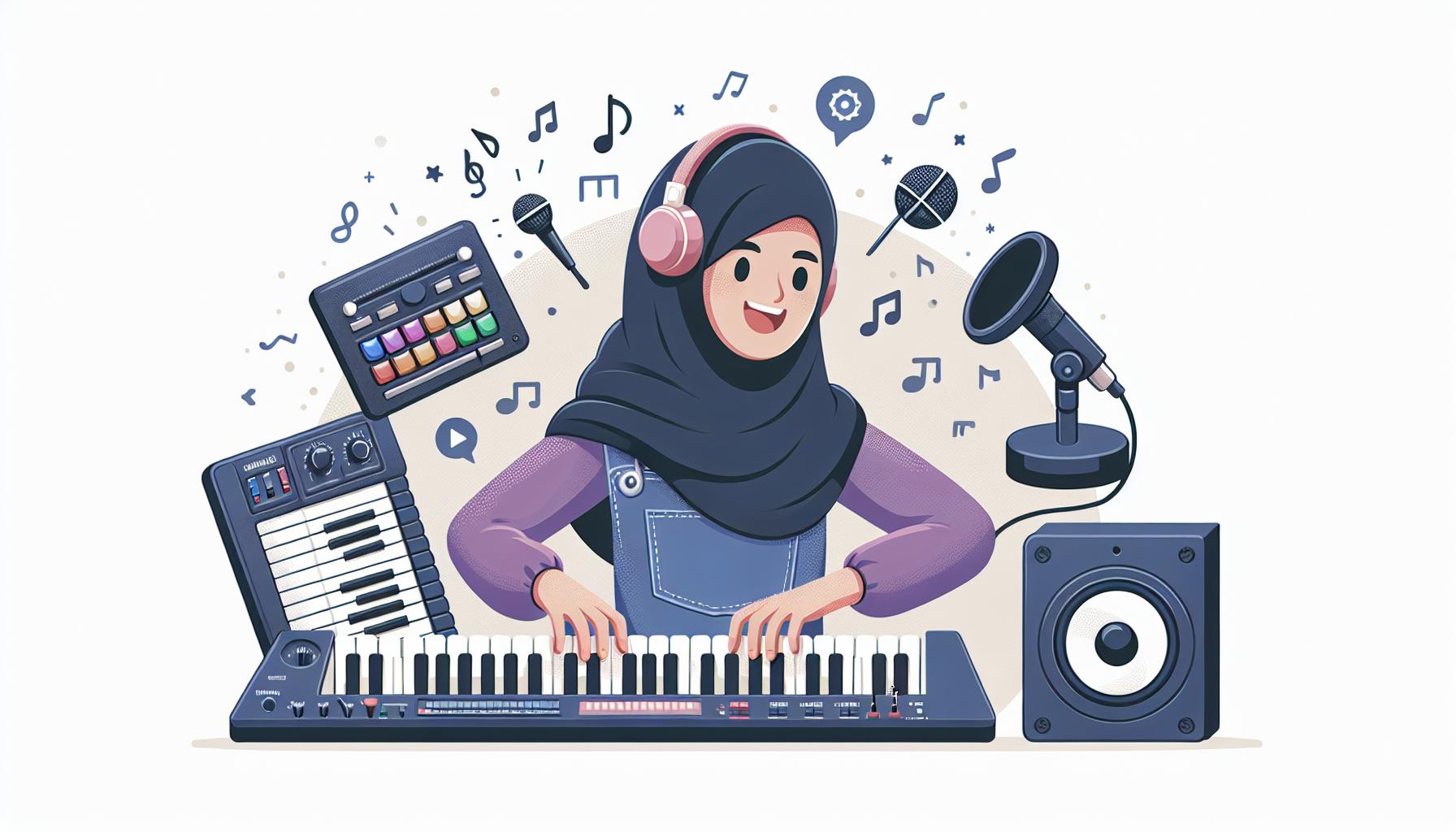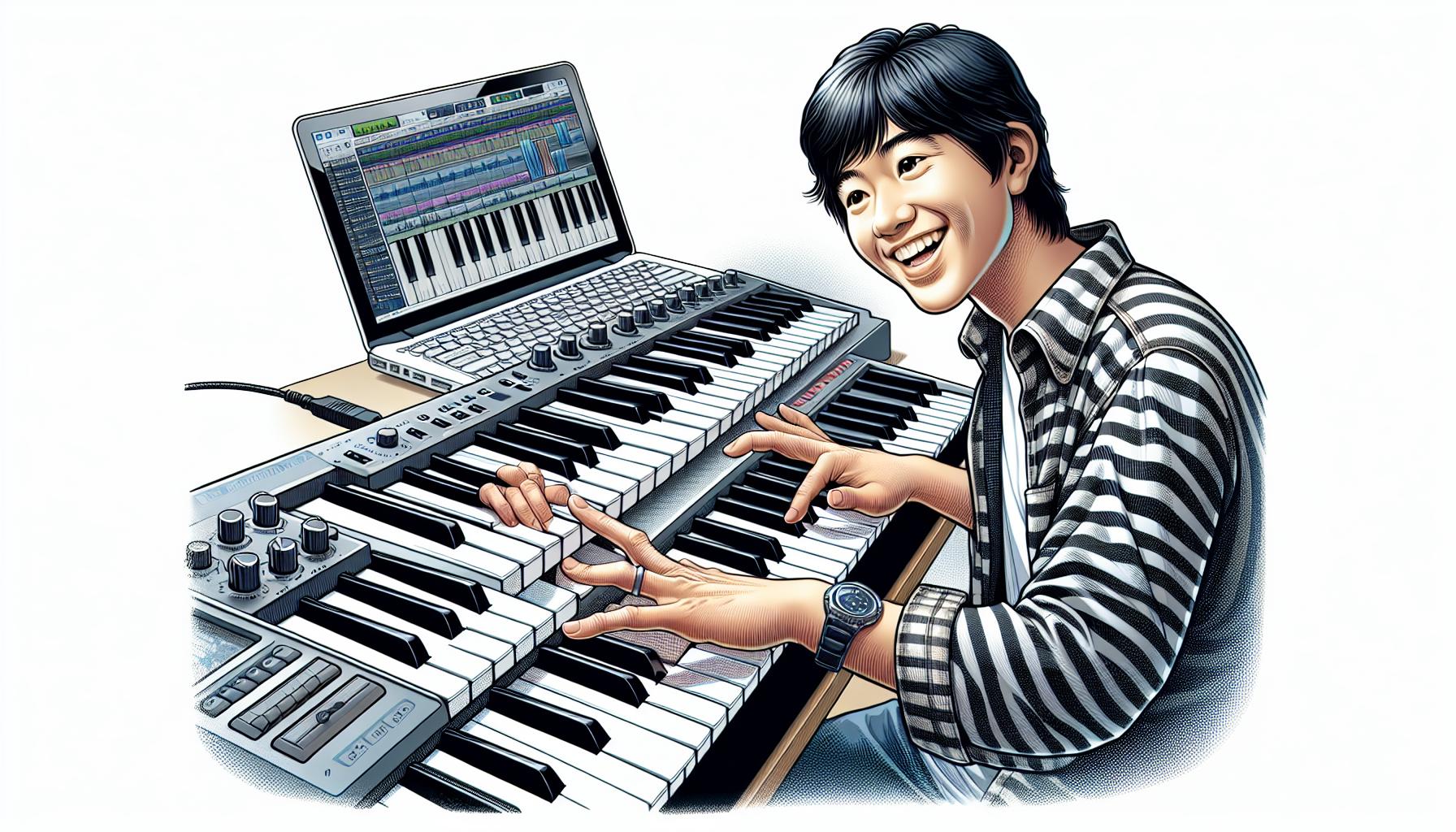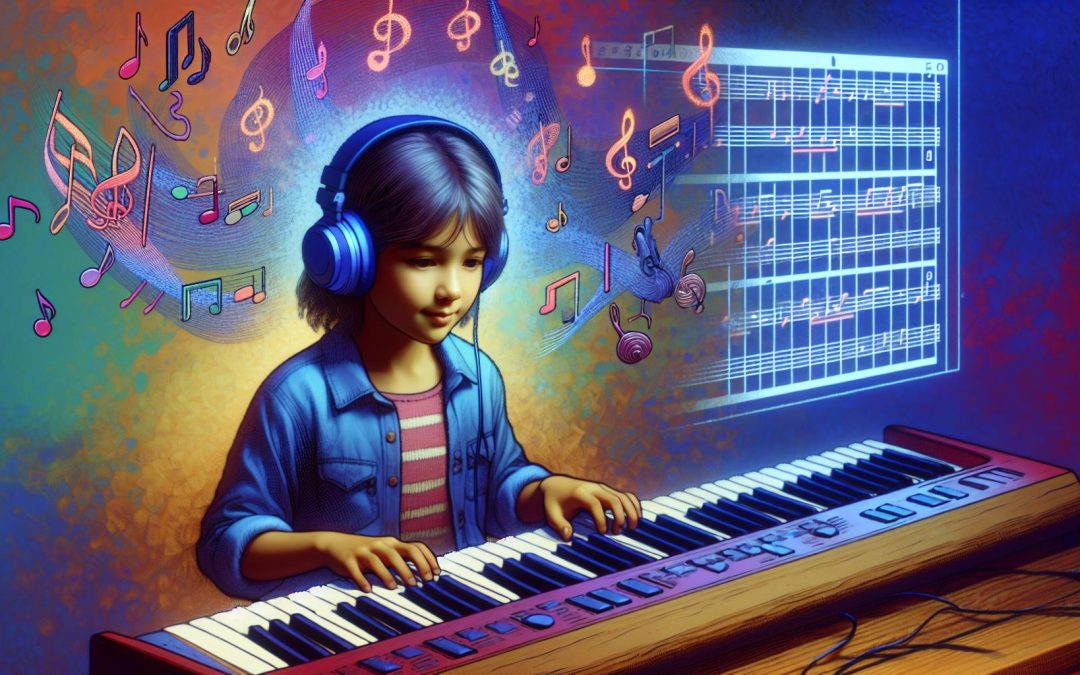Deciding on the first instrument to learn can be a bit of a head-scratcher. With so many options out there, it's easy to feel overwhelmed. But what if there was an instrument that's not only versatile but also beginner-friendly? Enter the keyboard, a popular choice for many budding musicians.
The keyboard's appeal lies in its accessibility and the immediate gratification it offers. From the moment they press their first key, learners can produce a clear, unmistakable note, unlike other instruments that might require a bit more finesse to get started. It's this straightforwardness that makes the keyboard a strong contender for the title of the best first instrument.
Moreover, the keyboard opens up a world of musical exploration. With a range of sounds and rhythms at one's fingertips, it encourages creativity and experimentation. It's an instrument that grows with the player, making it a fantastic starting point for anyone's musical journey.
Versatility of the Keyboard
The keyboard stands out in the musical world for its unmatched versatility. Unlike many other instruments, it offers a broad spectrum of sounds and styles, making it an ideal option for learners eager to explore various musical genres. From classical music to jazz, rock, and pop, the keyboard can mimic an orchestra's breadth or a rock band's energy, all from the comfort of one's home.
One of the keyboard's most compelling features is its ability to produce a wide range of sounds. Many modern keyboards are equipped with hundreds of tones, including pianos, organs, strings, brass, and synth sounds. This versatility not only keeps the learning process engaging and fun but also allows students to experiment and discover their musical preferences and talents. They can easily switch from practicing a Bach prelude to jamming on a blues scale, all with the press of a button.
The keyboard's adaptability extends to its role in music composition and production. With the advent of MIDI (Musical Instrument Digital Interface) technology, keyboards have become indispensable tools in the music industry. They can be connected to computers and other devices to record, compose, and produce music, opening up a world of creativity and professional opportunities for learners. This makes the keyboard not just an instrument for personal enjoyment but also a gateway to a potential career in music.
Additionally, the keyboard's layout provides a visual and intuitive understanding of music theory. The arrangement of keys helps learners grasp concepts such as scales, chords, and intervals more naturally than on other instruments. This visual approach to learning music theory is beneficial for beginners, as it demystifies complex concepts and encourages a deeper understanding of music.
Moreover, keyboards are available in various sizes and at different price points, making them accessible to a wide range of learners. Whether it's a compact, portable keyboard for a small living space or a full-sized digital piano for a more authentic feel, there's a keyboard for every need and budget. This accessibility further underscores the keyboard's role as a versatile and approachable instrument for beginners.
The keyboard's versatility is a key factor in its appeal as a first instrument. It not only offers immediate gratification and ease of learning but also provides a foundation for musical exploration and growth. Whether a learner's interest lies in classical music, rock, pop, or electronic genres, the keyboard serves as a versatile and fulfilling starting point in their musical journey.
Accessibility for Beginners

When considering whether the keyboard is a good first instrument for beginners to learn, one can't overlook its remarkable accessibility. This attribute alone makes it a compelling choice for novices of all ages. Unlike some instruments that require a certain physicality or sophistication to begin learning, keyboards present a welcoming starting point for many. From young children with smaller hands to adults who’ve never read a note of music in their lives, the keyboard adapts to the needs and limitations of its player remarkably well.
Keyboards come in a variety of sizes, offering an array of options to accommodate different physical abilities and space constraints. Mini keyboards with fewer keys are not just budget-friendly; they are also perfect for younger learners whose hands might struggle with the stretch of a full-sized piano keyboard. This adaptability ensures that beginners can start making music without the barrier of an unwieldy instrument.
Moreover, the financial barrier to entry is significantly lower for keyboards compared to many other musical instruments. Interested learners can find a wide range of options that fit various budgets. From affordable models ideal for someone just dipping their toes into the world of music to more sophisticated options designed for those ready to explore deeper, there’s a keyboard for every price point. Consider the following price categories that highlight this diversity:
| Type | Price Range |
|---|---|
| Basic Keyboards | $50 - $200 |
| Intermediate Models | $200 - $500 |
| Advanced Keyboards | $500 and above |
Additionally, many keyboards offer built-in learning aids which can significantly enhance the learning process. These features might include light-up keys to indicate which notes to play, built-in metronomes to keep time, and even tutorials or games that make practice fun. Such tools not only lower the initial learning curve but also keep learners engaged and motivated over time.
Another key aspect of the keyboard's accessibility lies in its ubiquity in music education settings. Many schools and teaching studios prefer keyboards due to their versatility and ease of maintenance. This widespread use makes it easier for learners to find teachers and resources tailored to keyboard learning. Online platforms and applications have further expanded access, offering lessons that range from absolute beginner to advanced techniques at the tap of a screen.
Immediate Gratification

When diving into the world of music, one of the most enticing aspects of starting with a keyboard is the immediate gratification it offers. In contrast to many other instruments, beginners can produce clear, recognizable notes from the moment they press a key. This instant feedback is not only rewarding but also encourages continued practice and exploration.
Keyboards, with their diverse range of sounds and effects, allow learners to experiment with different tones and styles right out of the gate. Whether it's mimicking the sound of a grand piano or venturing into electronic music, the keyboard facilitates an environment where creativity and experimentation flourish. This versatility is a boon for maintaining interest and motivation among beginners, who can easily feel overwhelmed by the complexities of music theory and technique.
The built-in features of many keyboards, such as pre-recorded tracks and metronomes, further contribute to this sense of immediate satisfaction. Learners can play along with these tracks, getting a feel for timing and rhythm without the need to assemble a band or invest in additional equipment. For many, this makes the learning process more engaging and less daunting, as they can perceive their progress in real-time.
Moreover, the digital nature of keyboards allows for easy recording and playback, enabling learners to listen to their performances and track their progress. This feedback loop is crucial for developing an ear for music and improving over time. The ability to instantly hear what they've played helps beginners identify areas for improvement and celebrate their accomplishments, no matter how small.
| Feature | Benefit |
|---|---|
| Price Range | Catering to various budgets |
| Size Options | Adaptable to different physical abilities |
| Built-in Aids | Enhances learning without extra costs |
| Online Tutorials | Expanded access to lessons |
The affordability and accessibility of keyboards also play a significant role in the immediate gratification they offer. With options available across a broad spectrum of price points, beginners can get started without a sizable upfront investment. This accessibility extends to the availability of sizes, ensuring that individuals of all ages and physical abilities can find an instrument that suits their needs.
Musical Exploration with the Keyboard

The keyboard stands out as a remarkable tool for musical exploration, especially for those embarking on their musical journey. One of the most compelling aspects of learning on a keyboard is the vast array of sounds and instruments it can emulate. From the rich tones of a grand piano to the sharp twang of an electric guitar, keyboards allow learners to experiment with sounds that span across genres and eras. This not only keeps the learning process fresh and engaging but also opens the door to creative expression from the very beginning.
Moreover, the integration of technology into keyboards presents limitless opportunities for growth and exploration. With features such as MIDI (Musical Instrument Digital Interface) connectivity, learners can connect their keyboard to a computer or tablet, opening up a world of digital audio workstations (DAWs) and educational apps. This connection enables beginners to compose, record, and refine their music with professional-grade software, a process that was once accessible only to experienced musicians with expensive studio equipment.
| Advantage | Details |
|---|---|
| Diverse Instrument Sounds | Allows playing sounds from pianos to drums, broadening musical understanding. |
| MIDI Connectivity | Facilitates connection with software for composing and editing music. |
| Built-in Learning Tools | Many keyboards feature lessons and games that make learning music theory and practice enjoyable. |
In addition to the plethora of sounds and technical capabilities, many keyboards come equipped with built-in learning tools. These range from simple metronomes to complex software that teaches music theory, note reading, and even song performance. Some models offer light-up keys to guide beginners through songs, making the initial stages of learning music much less daunting. These features not only aid in practicing and perfecting pieces but also add an element of fun to the learning process.
Practicing with a keyboard also fosters a deep understanding of musical structure and theory. As learners experiment with different sounds and compose their pieces, they naturally come to grasp concepts like harmony, melody, and rhythm. This foundational knowledge is crucial for those who wish to delve deeper into music composition or take up other instruments in the future.
Growth Potential as a First Instrument

When considering the keyboard as a first instrument, it's imperative to look at its growth potential. The keyboard stands out for a variety of reasons, primarily due to its inherent versatility and ability to grow with the musician. As learners progress, they often discover that the keyboard not only serves as a fantastic groundwork for understanding musical theory but also offers an expansive range of complexity and expression. This adaptability ensures that musicians can continually challenge themselves and explore new horizons.
One of the strongest points in favor of the keyboard is its wide range of sounds and features. Modern keyboards can emulate the tones of many instruments, from the grand piano to strings and even percussion. This allows students to experiment with styles and genres far beyond traditional piano music, encouraging a well-rounded musical experience. The inclusion of MIDI (Musical Instrument Digital Interface) connectivity opens another realm of possibilities. Through MIDI, players can connect their keyboard to a computer and a variety of digital audio workstations (DAWs) and educational apps. This connectivity facilitates not only learning but also the composition and recording of music, providing a hands-on introduction to music production.
An important factor in the growth potential of using a keyboard as a first instrument is the array of built-in learning tools many models offer. Features such as built-in metronomes, LED guide lights, and interactive learning software directly accessible through the keyboard itself make mastering the basics more intuitive. These tools support a self-paced learning journey, allowing students to learn and practice independently, which is crucial for developing consistency and discipline in musical training.
Additionally, keyboards often come with tutorial programs and can connect to a wide array of educational apps. This digital integration makes learning engaging and interactive, appealing to learners of all ages. They can benefit from real-time feedback on their playing, which accelerates the learning process. Moreover, these platforms frequently update, ensuring that tutorial content remains fresh and in step with contemporary musical trends.
| Feature | Benefit |
|---|---|
| Versatility | Explores a wide range of musical genres and styles |
| MIDI Connectivity | Facilitates composition and music production |
| Built-in Learning Tools | Offers self-paced, interactive learning |
| Digital Integration | Keeps educational content fresh and relevant |
Conclusion
Choosing a keyboard as a first instrument opens up a world of musical possibilities. Its versatility and the range of features it offers make it an ideal starting point for beginners keen on exploring various musical genres and styles. The ability to connect with digital audio workstations and educational apps not only enhances the learning experience but also keeps it engaging and up-to-date. With a keyboard, learners have a solid foundation to develop their musical skills and creativity, making it a fantastic choice for anyone stepping into the world of music.
Harlan Kilstein began playing piano during covid with no piano background at all. He taught himself how to play learning what to do and what not to do.
Today he's an advanced intermediate player and can help you grow in your skills because he learned all this on his own.








